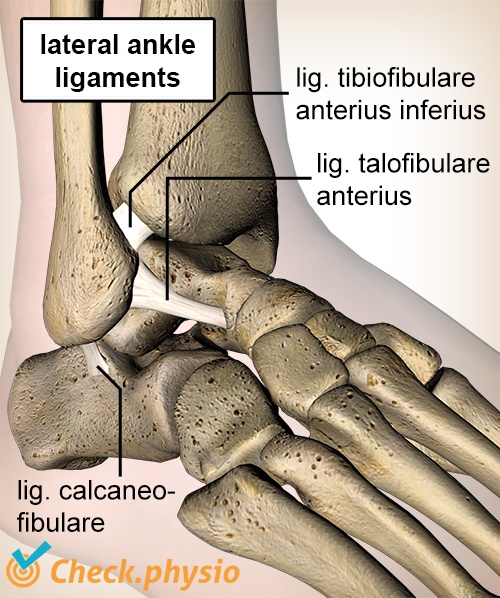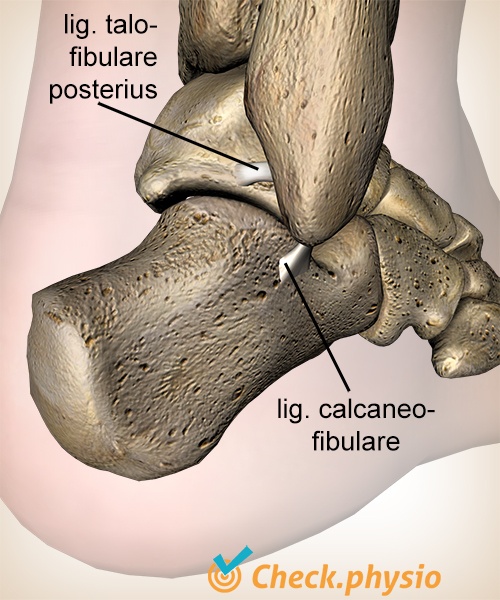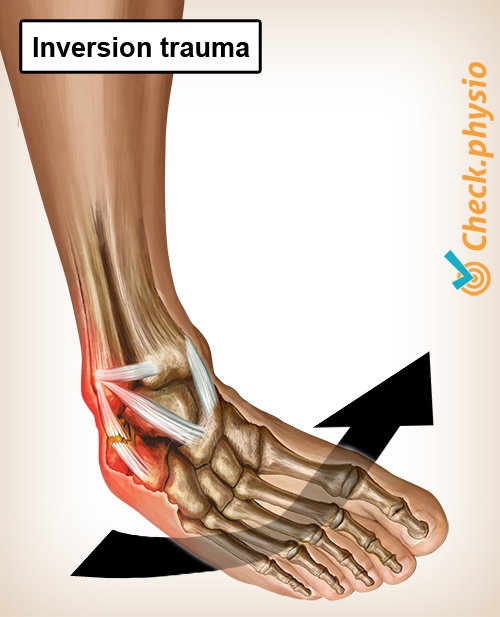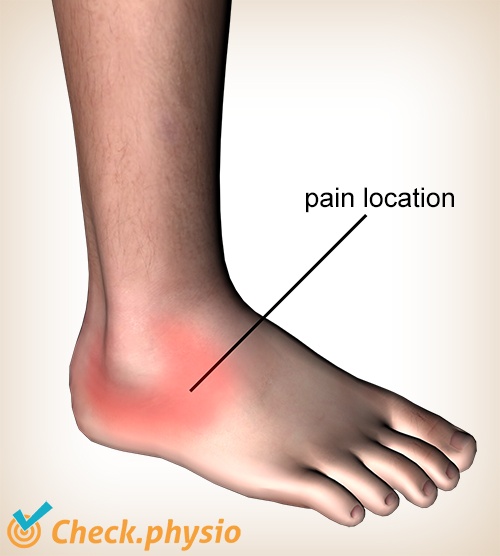- Conditions
- Lateral ankle ligament injury
Lateral ankle ligament injury Inversion injury ankle/ lateral ankle sprain
Introduction
The lateral ankle ligament injury is a very common injury to the ankle. The symptoms usually occur after a person stumbles or twists their ankle. If an ankle ligament injury is not treated properly, it can result in permanent instability of the ankle joint.
The injury is very common in men aged 15 - 35 and in athletes. Athletes who do a lot of jumping, turning or who take part in a contact sport are at increased risk.
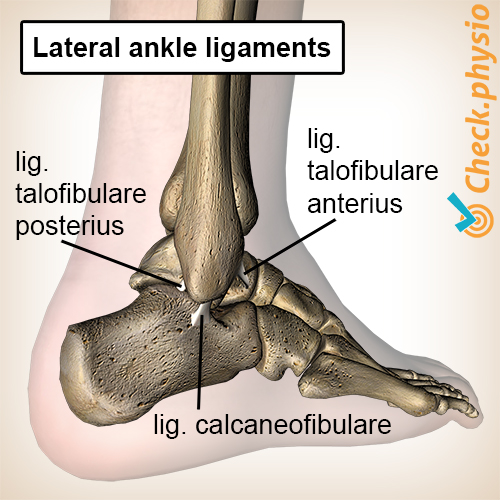
Description of condition
The ankle ligaments are rigid, robust band-like structures located on the inside and outside of the ankle. They connect the lower leg to the foot and absorb the shocks of extreme movements in the ankle joint.
When we stumble or sprain an ankle, this causes maximum stretching of the ankle. In most cases they prevent the ankle from folding over completely. If the forces are greater than the ankle ligaments can take, they may tear, completely or partially.
The injury is categorized into various grades. A grade 1 injury is a mild sprain. Only a few fibers in the ligament are torn. A grade 2 injury is more serious and one of the ligaments may tear completely (total rupture). If several ligaments are torn, resulting in the ankle joint becoming completely unstable, this is referred to as a grade 3 ankle ligament injury.
Cause and history
The symptoms usually occur at a clearly defined moment when a person stumbles or sprains the ankle. In some cases, the ankle ligaments may also become overloaded through prolonged stretching during sports or other activities.
The typical sprain that causes injury to the lateral ankle ligaments is also referred to as an inversion trauma. In this injury, the sole of the foot rotates inward and the ankle rotates outward (see image). As a result, the lateral ankle ligaments are fully stretched.
In general, the ankle ligaments tear in a standard sequence. Normally the ankle ligament called the anterior talofibular ligament is the first affected ligament. The next ligaments to tear - in sequence - are the calcaneofibular ligament, the posterior talofibular ligament and the anterior inferior tibiofibular ligament.
Signs & symptoms
- Pain on the outside of the ankle/foot.
- Swelling (immediately and during the first few days after the injury).
- Sometimes a bruise (hematoma) may be present.
- Feeling of instability in the ankle.
- Almost all movements of the ankle may be painful. Especially, the (passive) inward rotation of the base of the foot (inversion) makes the symptoms worse, as this stretches the lateral ankle ligaments.
Diagnosis
Treatment and recovery
The treatment depends on the severity of the injury. The physiotherapist can examine this. Often it is sensible to walk on crutches for the first few days after the injury, to reduce strain on the torn ligaments.
A pressure bandage is prescribed and the leg should be elevated.
Once the swelling has partly gone down, the ankle may be taped.
Treatment consists of exercises for the ankle that aim to improve the mobility, strength and stability. The strain is gradually increased to the level at which the patient wants to be able to function (activities or sport). If the patient repeatedly sprains the ankle, one may consider using an ankle brace.
One should take into consideration that complete recovery of sprained or torn ankle ligaments takes a minimum of 6 weeks and may even take longer than a year. Allowing the injury to heal without intervention may result in chronic instability.
This increases the risk of repeated sprains by three-fold.
Exercises
During the recovery process, it is important to stimulate the ankle ligaments carefully so that they regain sufficient strength. See a professionally compiled exercise program here with exercises for the lateral ankle ligament.
More info
You can check your symptoms using the online physiotherapy check or make an appointment with a physiotherapy practice in your locality.
References
Nugteren, K. van & Winkel, D. (2009) Onderzoek en behandeling van de voet Houten: Bohn Stafleu van Loghum.
Verhaar, J.A.N. & Linden, A.J. van der (2005) Orthopedie Houten: Bohn Stafleu van Loghum.

